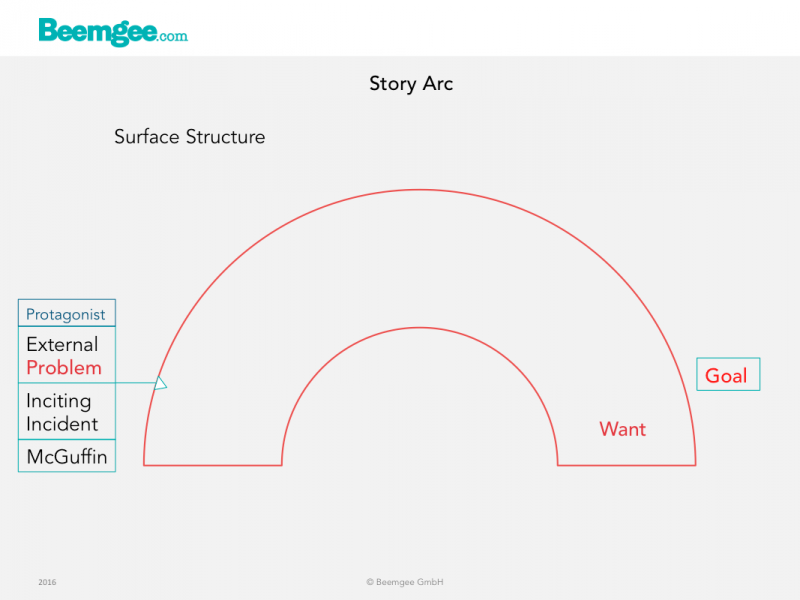McGuffin
In storytelling, a McGuffin (or MacGuffin) is something that the protagonist is after – along with most other characters in the story.

The use of a McGuffin is a device the author employs in order to give a story direction and drive.
Easy to spot McGuffins are the Ark of the Covenant in Raiders Of The Lost Ark, the statuette in The Maltese Falcon, private Ryan in Saving Private Ryan, the ring (more specifically, the act of its destruction) in Lord Of The Rings. Note how in these examples, the McGuffin is in the title of the story. The McGuffin is embedded in the narrative structure and becomes what the story is about, on the surface at least.
Typical genres that have McGuffins are comedy, crime, adventure, fantasy and other quest stories. But conceivably, a dressed up McGuffin might be found in any genre.
Nor does a McGuffin have to be an object. It could be a person or a quality. In a story of several characters vying for the love of one other character, that love might be considered the McGuffin. A place might become a McGuffin too – consider the role of the planet Earth in Battlestar Galactica.
In terms of narrative structure, a McGuffin occupies the position of external problem. The external problem of a character in a story which features a McGuffin will likely involve the McGuffin. For example due to the client who walks through the detective’s office door and presents a case for the detective to solve. Like an external problem, the McGuffin will suddenly become relevant in the protagonist’s life one day. There will be some reason a mission involving the McGuffin is imposed upon the character.
The mission is often to attain the McGuffin. But it may also be to protect it. Or to destroy it. Or some other verb. Indiana Jones is given the task of finding the Ark. The Bodyguard must protect his ward. Frodo must destroy the ring. The journalist researches the meaning behind the last word “Rosebud” of Citizen Kane. Menelaus, Agamemnon and the whole Greek army wage war on Troy because of Helen, who is essentially a McGuffin.
A story does not require a McGuffin. Using one is an option the author has, a technique which makes the story surface structure explicit. In most stories, the protagonist must deal with an external problem. McGuffin stories are no different, just a bit clearer to everyone involved. The characters explicitly state their want and/or perceived need of the McGuffin. The audience/reader therefore knows what to expect – and it is worth remembering that fulfilling audience expectations is just as important as surprising the audience.
For the author, the job of conceiving the story becomes easier when it is clear that everything that happens in the story must lead to the answer of the question, who gets the McGuffin?
As such, thinking of the external problem as a McGuffin, even if strictly speaking it isn’t one, can help the author to remain precise in the design of the plot. It might help avoiding digressions, tangents, or any plotlines or characters that do not involve what must happen to the McGuffin.
Related function in the Beemgee story development tool:
Story Information
Got a great idea for a MgGuffin? Put it in a plot!

